Balayage vs Ombre vs Highlights: A Comparison
You have decided to color your hair for the first time right? But you are not sure which one to choose between balayage, ombre, or highlights. Balayage, ombre, and highlights are the most popular techniques to help you add some texture to the hair by highlighting some strands. Generally, depending on your desired results, one technique will be better suited than others. If you want to learn more about the differences between these three top hair techniques then keep on reading the article.
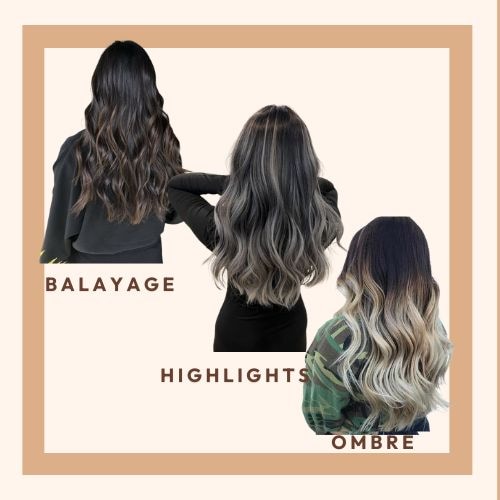
What is Balayage?
Balayage is a popular hair coloring technique that gives your hair a natural, sun-kissed look. The word "balayage" comes from the French term meaning "to sweep." Balayage is a freehand highlighting technique where color is swept on random hair sections. Unlike traditional methods, balayage doesn't use foils or caps. Instead, it allows the hair color artists to combine many shades for a more personalized and blended appearance.
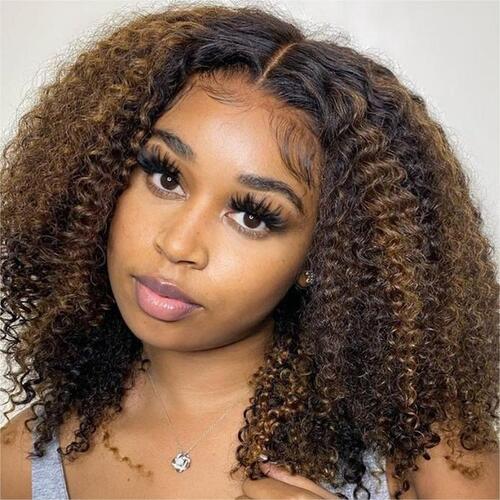
Source: UNice Review
The Different Types of Balayage
Since balayage is a hand-painting technique, it allows for more variations and fantastic color compositions. Therefore, balayage can be done on any hair color from red hair to blonde hair, and brown hair. It is also beautiful on medium-length and long hair. One of the top benefits of balayage highlights is that they are cost-effective since they don't require frequent touchups.
Related article
Partial vs Full Balayage, a Detailed Guidance for You
Foilayage vs Balayage, What Are The Differences?
Reverse Balayage: Everything You Need To Know
What is Ombre Hair?
Ombre is also a French word that means shade or shadow. Usually, the dark, top section is the natural hair color shade and the bottom section is lightened with hair lightener. Just like balayage, ombre hair can be of any color combination- brown, red, natural blonde, and even pink. Ombre color is also easy on the budget since it doesn't require frequent touchups, and the top section typically remains dark.
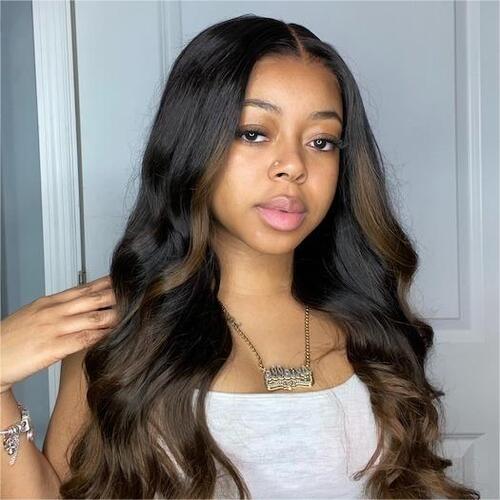
Source: UNice Review
The Different Types of Ombre
Another version of the ombre is called sombre. In a sombre hairstyle, the difference between the two tones is that one is softer. Another version is also known as color melting. In color melting, three hair color shades may be used on each strand, and each shade is blended with the side of the hair color brush to make them appear to be melting into each other.
Related article
The Fantastic Ombre Hair Ideas: Freshen Up Your Appearance
Reverse Ombre Hair: Everything You Need To Know
What are Hair Highlights?
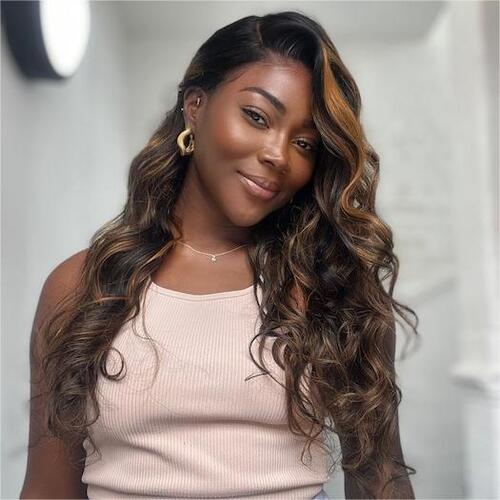
Source: UNice Review
Hair lighting is a hair coloring process aimed at highlighting a few hair sections. You can use any color to highlight as long as it is lighter than the natural hair color. Highlights are basically done with coils, which keep the bleach or lightener heated, allowing for much more intense lighting. Highlights are ideal for people who need a lighter look and have dark natural hair.
The Different Types of Highlights
It will give them more lift. Highlights have some advantages, such as a more consistent and formal look. Incorporating highlights into your hairstyle offers versatility. You can style your hair in different ways, and the highlights will enhance the overall look.
Related article
Hair Streaks Vs. Highlights, What are the Differences?
Babylights VS. Highlights, What are the Differences?
Difference Between Balayage and Ombre and Highlights
When you're deciding between balayage, ombre, and highlights, understanding their differences can help you make the best choice for your hair. Each technique offers unique application methods, visual results, and maintenance needs. Let's dive into these aspects to see what sets them apart.
| Aspect | Balayage | Ombre | Highlights |
| Application Technique | Hand-painted sections, blending colors from root to tip. | Gradual transition from dark to light, typically darker roots. | Thin, evenly spaced foils placed throughout the hair. |
| Effect | Soft, natural sun-kissed look, blended seamlessly. | Sharp contrast between dark roots and lighter tips. | Adds dimension with brightened sections, creating contrast. |
| Maintenance | Low maintenance, grows out naturally. | Medium maintenance, noticeable line between colors as hair grows. | High maintenance, requires frequent touch-ups. |
| Suitability | Adds depth to fine hair and softens thick hair for a blended look. | Creates a smooth transition on medium-length hair and enhances curls. | Brighten straight, wavy, or curly hair with clear streaks. |
Application Techniques
Balayage involves a freehand painting technique. This method doesn't use foils, allowing for a more personalized look. Balayage highlights often start away from the roots and become more concentrated towards the ends.
In contrast, highlights typically use foils to separate sections of hair. This allows for precise application from roots to ends. You can choose between full or partial highlights, depending on how much brightness you want.
Ombre, on the other hand, creates a gradient effect. The application starts with a darker shade at the roots, gradually transitioning to a lighter shade at the tips.
Visual Results
Balayage gives your hair a soft, blended appearance. This technique offers a seamless transition between colors, making it ideal for those who want a subtle change.
Highlights provide a more defined look. They add dimension and brightness, enhancing your natural hair color. You can opt for subtle or bold highlights, depending on your style preference.
Ombre delivers a striking two-toned effect. The contrast between the dark roots and light ends creates a bold statement.
Maintenance Requirements
Balayage requires less maintenance compared to traditional highlights. The color grows out naturally, so you won't need frequent touch-ups. You might visit the salon every 3-4 months to maintain the look.
Highlights need more regular upkeep. Depending on your hair growth and the contrast between your natural color and highlights, you may need touch-ups every 6-8 weeks.
Ombre is also low maintenance. Like balayage, the color grows out naturally, reducing the need for constant salon visits. This makes it a great option if you prefer a stylish look without the hassle.
Suitability for Different Hair
Balayage works wonders on all hair types. If you have fine hair, balayage can add depth and dimension without weighing it down. For those with thick hair, it offers a soft, blended appearance that reduces bulkiness.
If you have medium-length hair, ombre can still create a beautiful transition from dark to light. For short hair, the contrast might be less pronounced, but it can still add a modern touch. Curly hair benefits from ombre as the color transition enhances the curls' natural bounce.
Which One Should You Choose Between Balayage, Ombre, and Highlights?
A lot of people don't know the difference between Highlights, Balayage, or Ombre hair and end up requesting the wrong thing from their hairdresser. so you can watch the video below Ellebangs try to explain which is right for your hair type!
Here is how to choose one that suits your lifestyle.
Go for balayage if:
· You are coloring your hair for the first time
· You want subtle highlights
· You want natural gray-coverage
· You are looking for an option with low-maintenance results
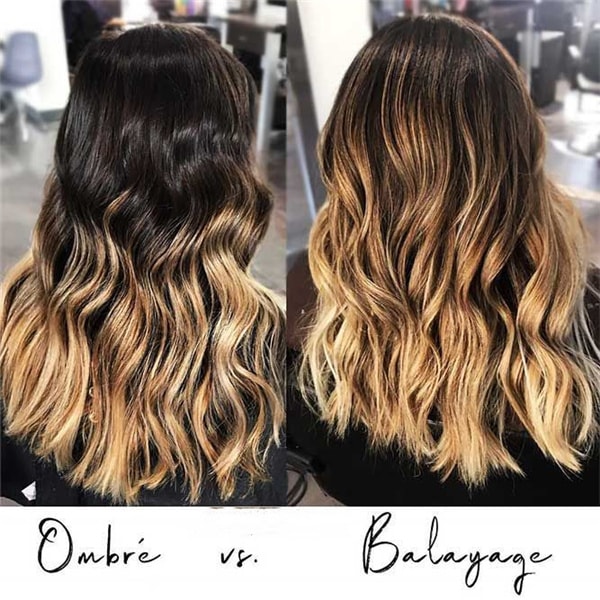
Go for ombre if:
· You are looking for low maintenance results
· You don't want to visit the salon more often
· You are creative and adventurous with your personal style
· You are looking for a subtle statement
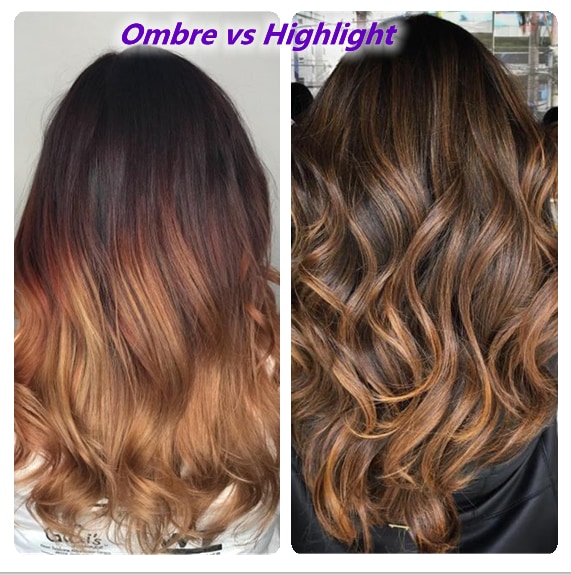
Go for highlights if:
· You want prominent and high-contrast color patterns
· You can commit to regular touch-ups and maintenance
· You want uniform hair with several shades for a natural look
Care Tips for Balayage, Ombre, and Highlights
Whether you choose balayage, ombré, or highlights, coloring your hair may damage your hair. This is why you need to take extra measures to prevent the possibility of these hair techniques damaging your hair and maintaining hair color. Here are some tips to help you achieve that
· Do not miss weekly treatments to restore and nourish your hair
· Avoid washing your hair too often
· Stay away from direct sun exposure
· Avoid using chlorinated or salty water to wash hair.
Conclusion
Keep in mind, as I mentioned in the blog, that these terms mainly refer to the TECHNIQUE and not so much the final result. Whether you prefer subtle or dramatic changes, there's a technique that fits your needs.
FAQ
Can I Do These Techniques at Home?
While you can attempt these techniques at home, professional stylists recommend visiting a salon. A stylist ensures precise application and achieves the desired look. DIY attempts might lead to uneven color or damage.
Which Technique Works Best for Curly Hair?
All three techniques—balayage, ombre, and highlights—can enhance curly hair. Balayage and ombre highlight curls' natural movement and bounce. Highlights add dimension and can accentuate curl patterns.
Can I Switch From One Technique to Another?
Yes, you can switch between techniques. Consult your stylist to determine the best transition method. They can help you achieve the new look while minimizing damage.
Do These Techniques Work on All Hair Colors?
Yes, balayage, ombre, and highlights work on all hair colors. Stylists can customize shades to complement your natural color. Whether you're blonde, brunette, or redhead, these techniques can enhance your look.
